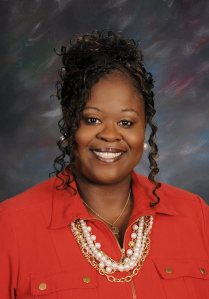
My personal philosophy is grounded in the belief that growth occurs when we allow ourselves to take what we know or think we know and make space for new learning or different points of view in attempts to enrichen my understanding of the world and myself. This belief applies to my professional life as well. I personify lifelong learning through formalized learning as I pursue my doctoral degree, professional learning sessions or networks, and self-directed learning such as reading books, webinars, or workshops. Growth necessitates taking risks that move us from comfort and familiarity into uncomfortable and unfamiliar territories. The integration of technology in educational settings is fertile ground for continuous growth. Researchers note that the fast-paced evolution of technology makes it challenging for school curriculums to keep up with the latest advancements (Roblyer and Hughes, 2019; Parkay et al., 2014). This fact does not eliminate educators and school leaders from carrying out the responsibility to ensure students are responsible digital citizens. As educators, we are charged with providing students with high-quality teaching and learning experiences that will equip them for a global society.
Technology can be found in a multitude of resources and environments all around us, from home appliances and electronic devices to motor vehicles, streets, stores, and markets (Schrum and Sumerfield, 2018). Its purpose is to improve our quality of life and to make it more efficient. Technology’s function in the education system would be no different. With the help of technology, students learn how to research, organize, communicate, and solve problems. Today’s students have only known a world where technology exists, making them digital natives (Roblyer and Hughes, 2019; Schrum and Sumerfield, 2018; Parkay et al., 2014). A large population of our educators has had to adapt to the language and practice of digital technologies, making them digital immigrants (Schrum and Sumerfield, 2018; Parkay et al., 2014). When schools ask students to power down before entering learning environments, they are confining students to the school building and essentially limiting and, in a sense, disconnecting them from the outside world (Liberty University, 2022).
“And you shall teach them the statutes and the laws and show them the way in which they must walk and the work they must do” (King James Bible, 1769/2017, Exodus 18:20). Technology empowers educators’ abilities to plan, educate, and enrich instructional practices that have positive impacts on student e. Luke 12:48 notes that we are held accountable for what God has given us. “For unto whomsoever much is given, of him shall be much required” (Luke 12:48). Educators are responsible for facilitating learning experiences that deepen students understanding of the complex matters in the world and prepare them for future success. In order to integrate meaningful technology into classroom instruction, educators must take a vested interest in increasing their knowledge and developing their skills to lead learners (Heift et al., 2019). These actions align with a letter Paul the Apostle wrote to the church. He instructed the people to “Study to shew thyself approved unto God, a workman that needeth not to be ashamed, rightly dividing the word of truth.” (2 Timothy 2:15). Studying is a part of the process of growth and subsequently distinguishes one as a learner.
We are educating our future leaders and preparing them to be responsible global and digital citizens who can navigate the world around them. “So he fed them according to the integrity of his heart; and guided them by the skillfulness of his hands (Psalm 78:72). Just as David cared for the flock, I take the responsibility of building the capacity of leaders and educators to implement technology in innovative ways seriously. I intentionally incorporate technology and model technology tools into all professional learning sessions. Leaders and educators have opportunities to see and experience the tools coupled with strategies and techniques used in purposeful ways.
Educational technology challenges our way of thinking and living. Fear and faith cannot reside in the same space for learning. I provide a safe risk-taking environment where educators and leaders can be vulnerable exploring and practicing new technologies in their instructional and leadership practices. This helps to build their confidence and gets them closer to embracing technology in the learning environment. All professional learning sessions include reflection. We reflect and remind ourselves that technology is a tool, and if we treat technology like we would any other new tool, study it, examine it, play with it, and test it out, we can focus more on the positive, power, and potential it has to improve the quality of our lives inside and outside the classroom.
References
Heift, T., Mackey, A., & Smith, B. (2019). History, pedagogy, data and new directions: An introduction to the educational technology issue. Annual Review of Applied Linguistics, 39, 1-7. http://doi:10.1017/S026719051900014X
King James Bible. (2017). King James Bible Online. https://www.kingjamesbibleonline.org/ (Original work published 1769)
Liberty University. (2022, September 1). Reimagining classrooms: Teachers as learners and students as leaders. [Video]. YouTube. https://www.youtube.com/watch?v=w6vVXmwYvgs
Parkay, F. W., Anctil, E. J., & Hass, G. (2014). Curriculum leadership: Readings for developing quality educational programs. (10th ed.). Pearson.
Roblyer, M. D., & Hughes, J.E. (2019). Integrating educational technology into teaching: Transforming learning across disciplines. (8th ed.). Pearson.
Schrum, L., & Sumerfield, S. (2018). Learning supercharged: Digital age strategies and insights from the edtech frontier. Ingram Publisher Services.